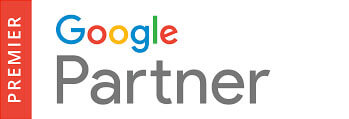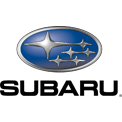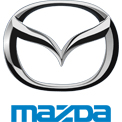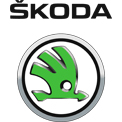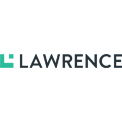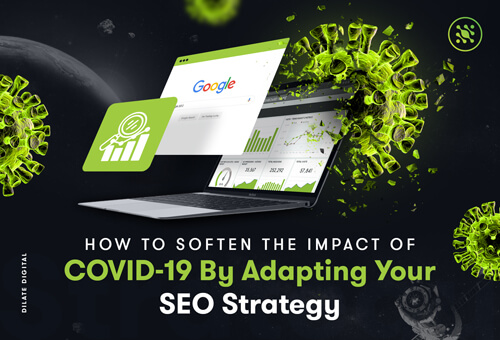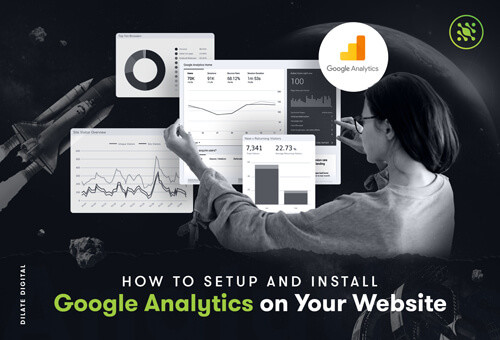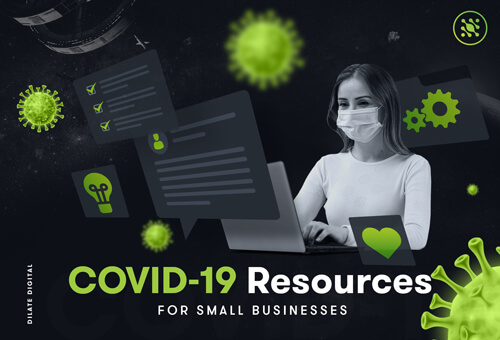What SEO Experts Can Learn From an Adwords Campaign

What if I told you that Adwords and SEO could play really well together? Better yet, what if I told you that they’re actually complementary services? For as long as we can remember, the industry has been pinning one service up against the other, as if PPC or SEO could not co-exist harmoniously. Well, we’re a PPC & Adwords agency in Perth and contrary to popular belief, we’re here to tell you that Adwords actually provides a lot of value when it comes to fine-tuning your SEO strategy. That’s why we’re generously sharing our 4 Pro Tips on what an SEO specialist can learn from an Adwords Campaign.
Pro Tip 1: Killer Word Combinations
First things first, don’t forget to look at the data. It shows you everything! A hyper beneficial way that Adwords can assist your SEO game is by discovering high-impression word combinations for your web content. In order to figure this out though, we need to go a few steps back & look at the different type of keyword match types you can set up in your AdWords campaigns. There are four main types of keywords you can choose between for your campaigns that will dictate what kind of search terms your ad will show for. Let’s go back to the fake furniture company you own to explain how each works below.
Broad-match: Broad-match is the default AdWords keyword type, it is the vaguest of the four. For example, if you use broad-match for the keyword “chair”, any search query that includes the word chair will trigger your ad to appear, this includes misspellings, synonyms and any other possibly related topic. For example, your ad might show up for “chairman”
Phrase: Phase Match is a match type that show’s up for phrases that match your exact keyword, with words either before or after. For example, if you used phrase match for “leather chair”, your ad could appear for “where to buy a leather chair”, it wouldn’t show up however for “leather dining chair” because that doesn’t match the phrase.
Exact: Exact match is a match type that triggers your ad to show up for that exact search or obviously close synonyms. For example “leather chair”, “leather chairs”, “leather seats”, “leather recliner”.
Broad-match Modifier: Broad-match modifier is similar to broad-match except that by adding a + sign in front of each keyword, it ensures that you only appear for searches that involve a combination of those specific words. For example, if you had +leather +chair in your keyword list, you could appear for “chairs made of fake leather”, “leather and suede chairs”. This is the match type that can assist your SEO.
The cool part about using broad-match modified is that it has massive potential to help you generate a lot of new content ideas, and also see what the market is actually looking for in relation to your product. By looking at the keywords with high impressions or clicks, you’ll be able to have an insight into the types of information your customers want to know about your product which you could use to create a whole new page on your website, or for a blog post. Pay attention and watch closely though, this match type often requires you to be proactive about your negative keywords list.
Pro Tip 2: Take Note of Negative Keywords

What are negative keywords? I’m glad you asked. In layman's terms, the negative keywords list is a list you add to over time in your campaign. Within Adwords, you can view the exact search terms you have appeared for, and when you discover a term that doesn’t align with your product or service, you add this to your negative keyword list. This list will prevent you from showing up for any searches that include that term again. For example, let’s pretend you sell designer furniture and you’ve created an Adwords campaign for selling your top-of-the-range, gorgeous sofa’s. It’s been live for a week, and you’d like to know what searches your ad has appeared for and to your horror, you see that you’ve appeared for “second hand” sofas. You know that no conversions will come from this, and the term might just end up eating away at your budget. So, like the savvy AdWords specialist you are, you add the term “second hand” to your negative list effective immediately - never again will you show up for a search query that includes the term “second hand”. Phew, crisis averted.
This is a quick and easy way to give you insight into all the keywords you do & don’t want to appear for in organic search. Words that could potentially harm your SEO strategy if it’s not managed properly. From there, your SEO specialist could do a deep dive into your content to ensure that your messaging is clear and doesn’t state any of the poor word association terms. Another useful insight you can get from the negative keyword list is popular phrases associated with your business (even though they may not be suitable for your ad), for example, “review” or “coupon” could be high traffic words that actually associate well with your business as a whole. If you notice that you have words similar to this with high search traffic in your negative keywords list, you could also assess your website to see if you have pages and content created for those search terms.
Pro Tip 3: Title Tags & Meta Descriptions

This is where Adwords can actually come in handy. First, you need to audit your Google Search Console to determine your highest ranking pages with the lowest percentage of click-through rates. These are the first pages you need to work on, so you’ll need to brainstorm a few possible title tags and meta descriptions that may potentially result in a better CTR. Once you have created a few possible title tags and meta descriptions, use your Adwords campaigns to test which title tag and meta description is the best performing ad copy. The way you determine that is simple, just monitor which ad has the highest click-through rate. Once you’ve determined a clear winner, then you’ll have your new title tags and meta description that you can apply to your webpages. However, if none of them have a high CTR, you might want to go back to the drawing board and try again or invest in a specialised copywriter to help you write some winning content.
There are a few quick pointers we want to share when it comes to altering your title tags and meta descriptions before you do anything. One, you don’t want to change them too often, changing them all the time can negatively impact your ranking, more often title tags than the meta descriptions - so only change them when you’re certain the new copy is superior to the existing copy. Two, ensure they’re keyword optimised so you’re ranking for the right search terms, there’s no point have a killer meta description if you’re not appearing to the right users. Lastly, think about conversion too. Is this meta description well suited to the information that’s on the page? If not, you might want to reconsider the content in your meta description. Similarly to point two, there’s no use in having a title tag and meta description with a high CTR if the conversion rate is abysmal. In the end, a high bounce rate is going to negatively affect your SEO strategy far more than an unoptimised meta description.
Pro Tip 4: Callout Extensions are kind of Awesome

All you need to do now is to know what you’re looking for when you’re assessing the performance of these top-secret pro tips. Very generally, what you’re looking for is your click-through rate metrics, a.k.a - how many people clicked through on your link after seeing the ad. The second important metric you’ll be looking for are your conversion rate metrics, a.k.a - how many people took action and made a conversion after clicking through on the ad. Together with these metrics, you should be able to pinpoint your best-performing Keywords, Descriptions & CTA’s (Call to Action) for your website. If after reading this, you’re intrigued but overwhelmed at the thought of tackling this yourself, you might want to seek a Adwords agency to take care of your Adwords Campaign right here in Perth. Give us a call today and let’s start something!
Our Blog

Our team of digital and business experts will guide you to the right direction.
Let's Talk
